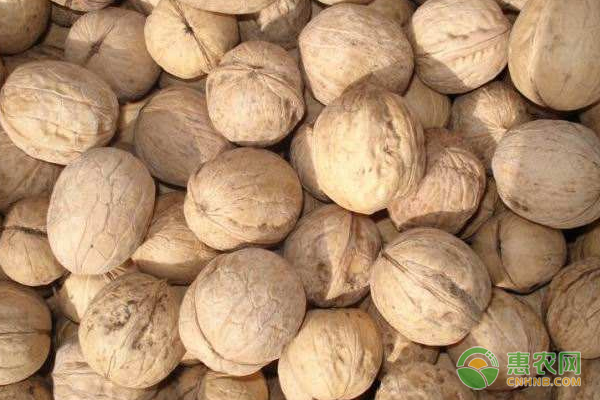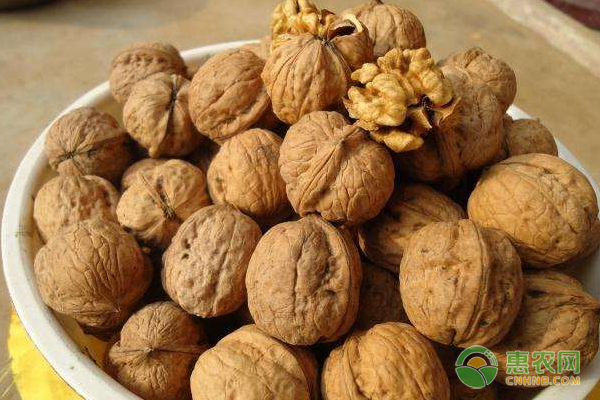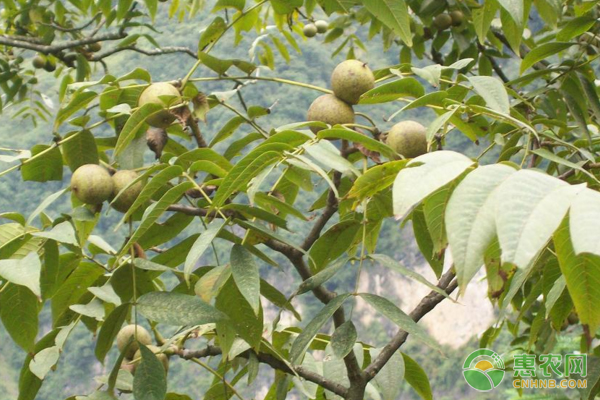Danfeng County has a long history of walnut cultivation, but the pests and diseases have become more and more serious in recent years, especially walnut black spot, blight, and black water disease, which have caused great losses to the walnut industry, but want to keep the walnut industry sustainable. It is particularly important to develop and strengthen the management of walnut pests and diseases. Therefore, today Xiaobian talks about the comprehensive prevention and control measures of walnut diseases, and I hope that it will help everyone. 1 walnut black spot 1.1 Distribution and harm Walnut black spot disease mainly harms walnut fruit, leaves and young shoots, and the disease fruit rate can reach 10%~30%. After the young fruit is damaged, the fruit surface will produce small spots of brown tears and stains. In severe cases, the lesions will sag and penetrate into the endocarp, and the whole fruit will turn black and rot, and the nuts will dry up and fall early. When the leaves are damaged, there will be a near-circular or polygonal black-brown small spot next to the veins. In severe cases, the lesions are combined into a piece, and the leaves are wrinkled and scorched. The young shoots of the year are more susceptible to the disease than the old ones. After the disease, the lesions can spread to the pith and form a massive ulceration. 1.2 Prevention methods Breeding excellent disease-resistant varieties; timely controlling pests that cause damage to walnut branches and fruits to reduce damage; remove residual fruits, leaves, pests and branches, and bring out incineration or burial outside the park to reduce pathogenic bacteria; Spray 3~5°Be stone sulphur mixture before germination, spray 2~3 times 2..1..400 times Bordeaux mixture in the early stage of female flower opening and young fruit, and also spray 1000 times methyl thiophane Prevention and treatment of body fluids. 2 walnut blight 2.1 Distribution and harm Walnut blight is a fungal sexually transmitted disease, which mainly damages the 1~2 year old branches of adult walnut trees. When it is serious, it can spread to larger branches. The young trees in the newly built walnut garden directly harm the trunk. The damaged branches and branches are gradually changed from taupe to yellowish brown or light reddish brown. Then they will turn into dark gray, the diseased part will sink, and the branches and branches will die. 2.2 Prevention methods Cut off diseased branches and weak branches, and bring out the incineration or burial outside the park to reduce the spread of disease sources; strengthen tree management, expand and weed, increase organic fertilizer, enhance tree potential, improve disease resistance; choose well-developed, woody Seedlings with high degree of grafting and graft healing; breeding resistant varieties and eliminating varieties with poor disease resistance; whitening walnut trunks and main branches in winter, preventing frost. 3 walnut black water disease 3.1 Distribution and harm Walnut black water disease mainly harms the trunk and main cortex. After being invaded, large lesions of soybean grains are formed on the outside of the cortex. When the disease is serious, the lesions in the affected area often have longitudinal cracks in the middle cortex, and black bacteria liquid will flow out therefrom. After the onset, the tree body is obviously weakened. After about 2-3 years, the yellow leaves of the walnut leaves will be dried and the whole plant will die. 3.2 Prevention methods Enhance the tree potential and improve disease resistance; carefully check the lesions on the walnut body in April-May, and find out that the lesions should be removed in time; 50-100 times with 50% methyl thiophanate or mancoamine in May-June The liquid sprayed trunk is sprayed once every 10 days for a total of 3 sprays. Oxygen Bag,Medical Oxygen Bag,O2 Bag,Oxygen Purse Hebei Dingli Medical Equipment Co., Ltd. , https://www.dinglimed.com


Main diseases of walnut in Danfeng County and comprehensive control measures